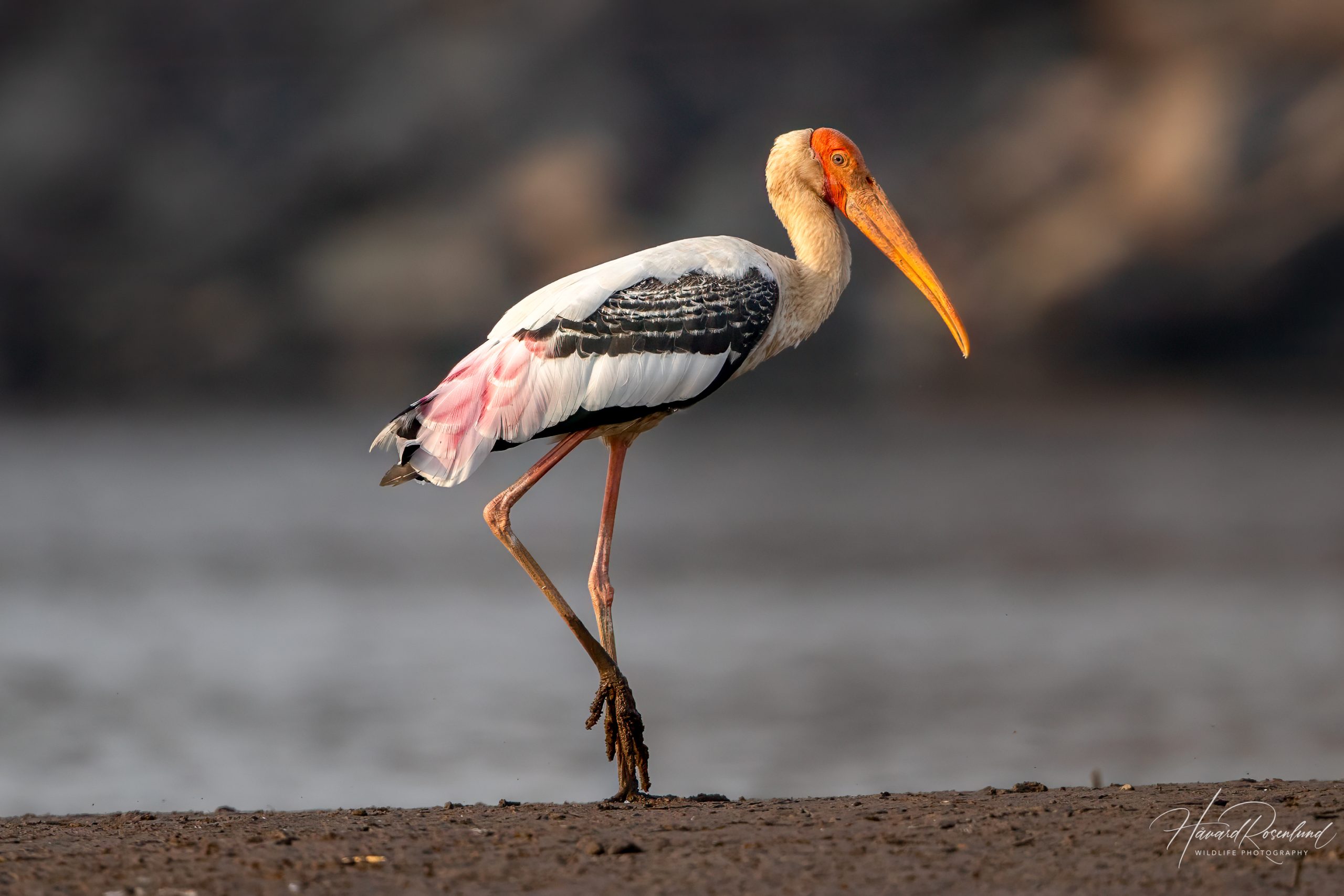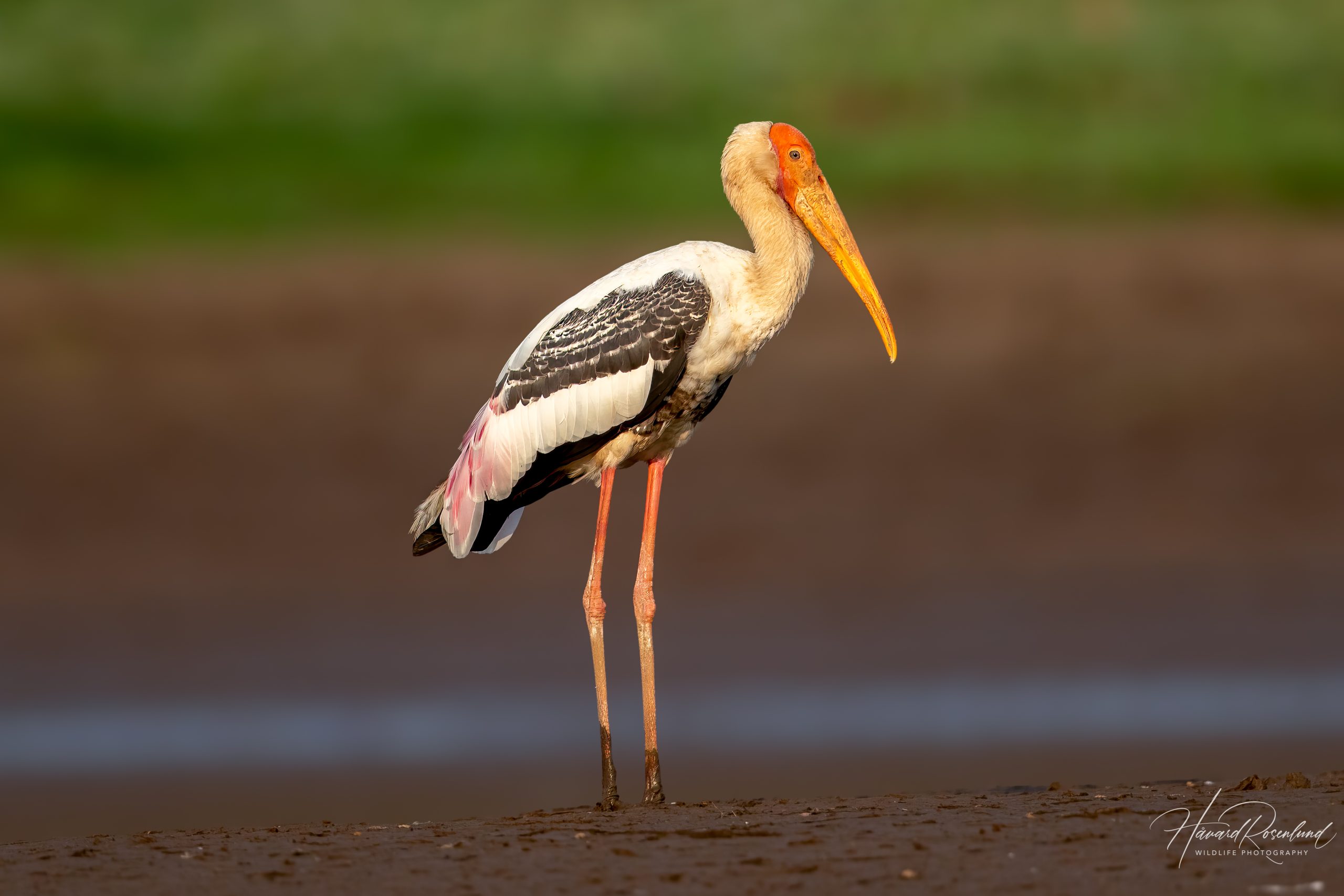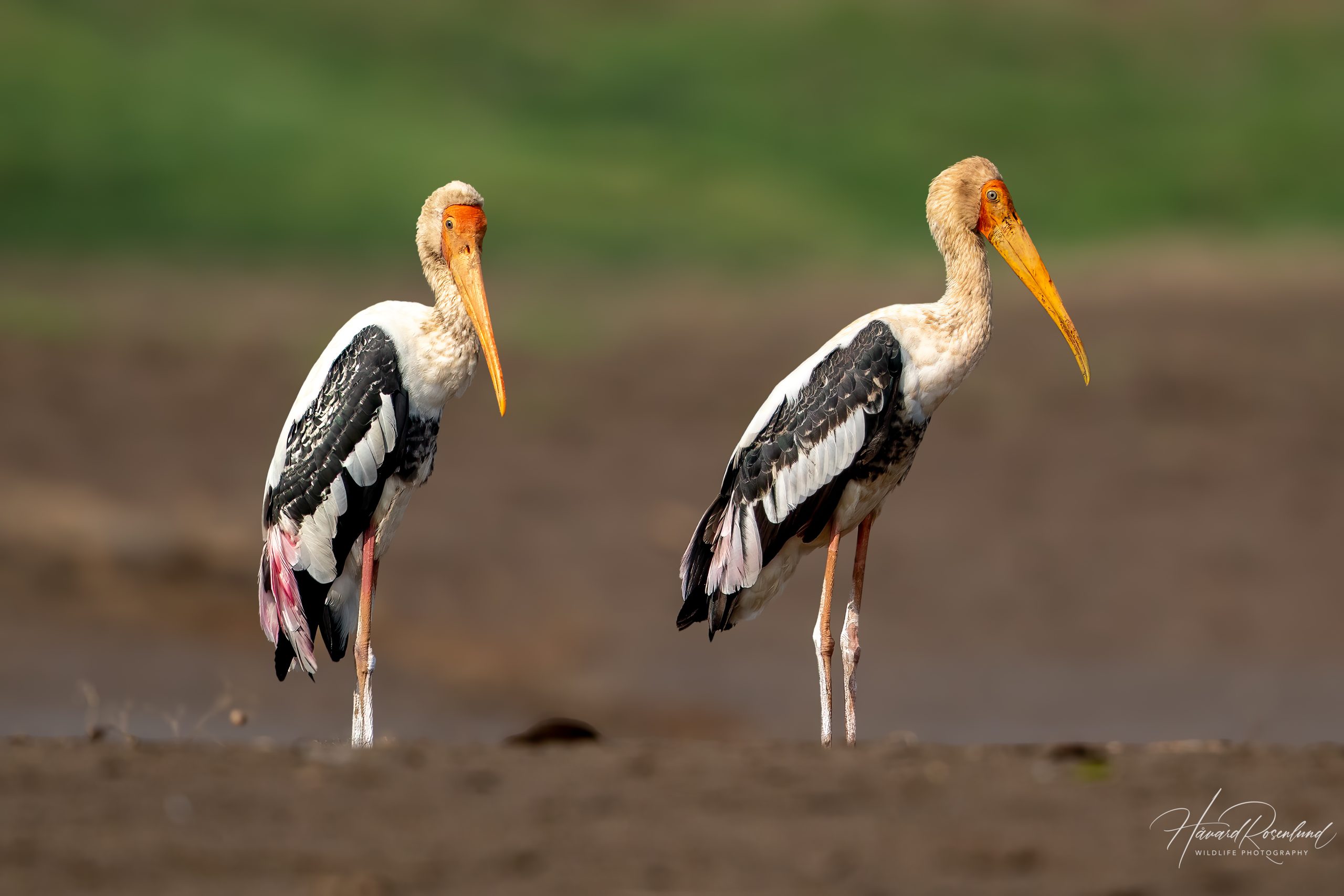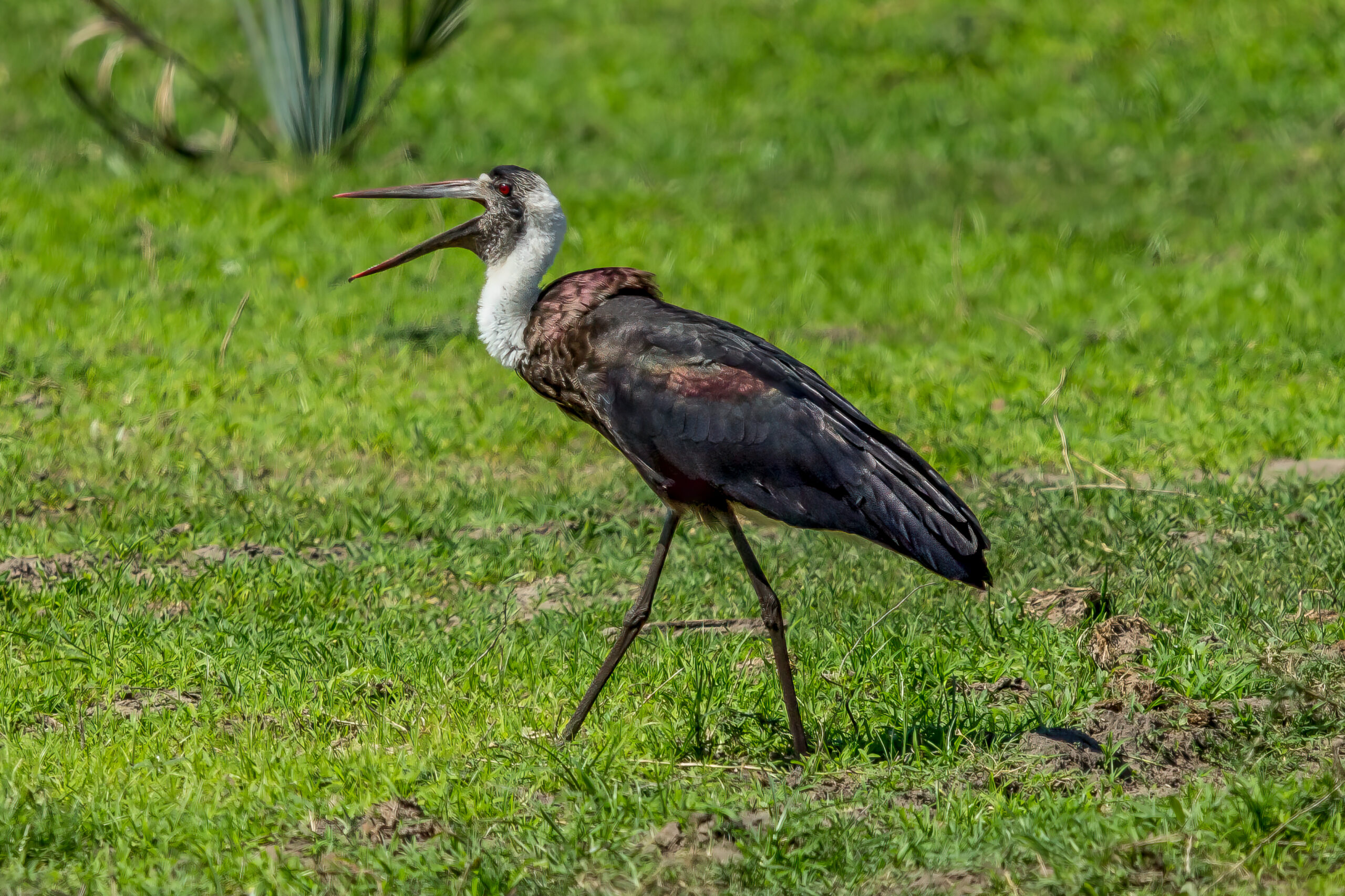Description
The painted stork (Mycteria leucocephala) is a large bird widely distributed across the Indian subcontinent, extending its range into Southeast Asia. It has a wingspan of about 150–160 cm (59–63 in) and stands approximately 93–102 cm (37–40 in) tall. The body is predominantly white, with a black breast-band, and black-and-white wings. One of the most distinctive features is the pinkish-red feathers on the lower back and tail, giving the species its “painted” name. It has a characteristic bald face that is red to orange in color, and a long, slightly curved yellow beak, which helps distinguish it from other storks in the region.
Diet & Habitat
The painted stork primarily inhabits freshwater wetlands, such as marshes, lakes, and riverbanks, where shallow waters are abundant. These environments provide the ideal conditions for its feeding habits. It feeds predominantly on fish, which it captures by a method known as tactile foraging. The stork wades through shallow water with its beak partially open, sweeping it from side to side. Upon contact with a prey item, usually a fish, the beak snaps shut reflexively, securing the meal. In addition to fish, it may occasionally consume amphibians, small reptiles, and invertebrates.
Behavior
Painted storks are social birds, often found in flocks, especially outside the breeding season. These flocks can include other species of storks, herons, and egrets. Painted storks are diurnal, being most active during the day when they feed, preen, and rest communally. They are known for their graceful flight, often soaring on thermals with minimal wing flapping, conserving energy while covering large distances in search of food.
A fascinating behavior of the painted stork is its ability to thermoregulate using its wings. In the heat of the day, it can often be seen standing with wings partially open, a behavior known as “wing-drooping.” This action helps to release excess body heat, keeping the bird cool in the hot climates it often inhabits.
Nesting
The breeding season of the painted stork generally coincides with the onset of the monsoon, although this can vary depending on local conditions. In India, breeding typically occurs from August to October. During this time, painted storks build large stick nests in trees, often in colonies that may contain hundreds of nests. These nests are usually situated in tall trees close to water bodies.
The female lays 2 to 5 eggs, which are incubated by both parents for about 30 days. The chicks are altricial, hatching blind and helpless, requiring extensive parental care. Both parents are involved in feeding the chicks, which fledge at around 60 days old. The juveniles stay with their parents for some time before becoming fully independent.
Status
The painted stork is listed as least concern on the IUCN Red List. It is a species that is believed to be increasing in numbers due to protection of its habitats and breeding colonies. It does face threats in some regions, particularly in Southeast Asia, such as habitat loss due to wetland drainage and conversion for agriculture, pollution, and disturbance from human activities.









